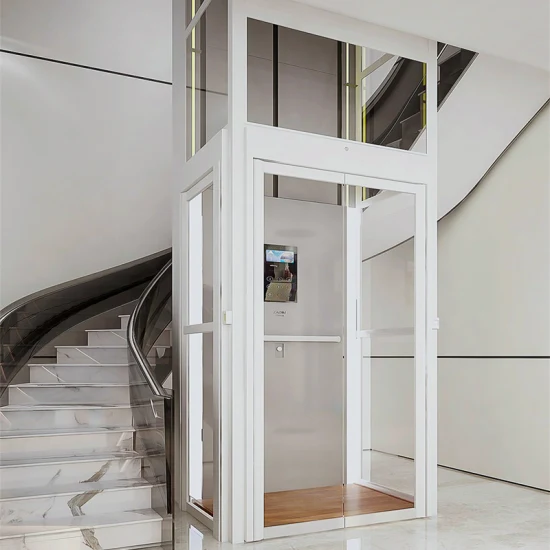We Maintain Lifts with Accuracy: Ensuring Security and Performance
We Maintain Lifts with Accuracy: Ensuring Security and Performance
Blog Article
Diving Into the Globe of Elevators: Usual Issues Encountered by Different Lift Mechanisms
As we browse through the upright transport systems of modern-day buildings, lifts stick out as a crucial element of our day-to-day lives. Nonetheless, behind their seamless procedure lies a globe of elaborate devices that can in some cases run into obstacles. From hydraulic elevators to grip systems and machine-room-less designs, each lift kind features its set of common issues. Understanding these difficulties is essential for making certain the smooth functioning of these crucial systems. Let's discover the intricacies that underlie the operation of lifts and the potential problems that can emerge, losing light on the elaborate internet of lift devices.
Hydraulic Lifts
Hydraulic lifts, typically liked for low-rise structures, utilize fluid pressure to manage the motion of the lift car (lift repair companies). This mechanism includes a hydraulic pump pushing oil right into a cyndrical tube, creating the lift to relocate the desired direction. While hydraulic elevators are known for their quiet and smooth operation, they do include their own collection of usual concerns
One common problem with hydraulic elevators is oil leak. In addition, problems with the control system, such as malfunctioning valves or a malfunctioning pump, can cause disturbances in the lift's motion.
Regular upkeep and prompt repair work are crucial to make sure the smooth functioning of hydraulic elevators. By addressing these usual problems proactively, structure owners can reduce downtime and ensure the safety and security and performance of their vertical transportation system.
Traction Elevators
When taking into consideration upright transportation systems in structures, one more common kind besides hydraulic lifts is the traction lift. Traction lifts operate making use of a system of ropes and counterweights that relocate the elevator vehicle by gripping onto the hoist ropes. This system enables smoother and much faster vertical transportation compared to hydraulic systems.
Among the common problems faced by grip lifts is rope wear. The continuous activity of the ropes within the traction system can bring about deterioration in time, possibly triggering the lift to malfunction or come to be risky for use. Routine evaluations and upkeep of the ropes are crucial to make certain the elevator's appropriate performance and security.
An additional concern that traction elevators might run into is connected to the control system. Issues with the control system can cause concerns such as erratic activity, delays in reaction times, or also complete shutdowns. Routine screening and maintenance of the control system are vital to stop such problems and ensure the elevator's dependability.
Machine-Room-Less (MRL) Lifts

Among the essential components of MRL lifts is the compact gearless grip device that is mounted within the hoistway. This maker efficiently drives the lift car without the need for bulky tools discovered in traditional grip lifts. Additionally, MRL lifts usually make use of a counterweight system to stabilize the vehicle, more enhancing their power efficiency.
Regardless of their advantages, MRL elevators may encounter challenges connected to Recommended Site repair and maintenance due to the restricted area for tools installment. Ease of access for servicing elements within the shaft can be restricted, calling for specialized training for technicians. Proper maintenance routines and routine examinations are crucial to ensure the continued smooth operation of MRL lifts.
Overloading and Weight Restriction Issues
Are lifts equipped to deal with excess weight loads efficiently and safely? Overloading and weight limitation issues are vital worries in elevator procedures. Lift suppliers layout raises with particular weight capabilities to make certain traveler safety and devices durability. Surpassing these weight limits can lead to numerous problems, including mechanical failings, hold-ups, and safety and security threats.
When elevators are strained, it places excessive strain on the motor, wires, and various other parts, possibly causing failures or malfunctions. Safety systems such as sensors and overload sensors are in place to protect against lifts from moving if they identify excess weight. In addition, going beyond weight limitations why not check here can result in boosted power consumption and deterioration on the lift system.
To alleviate overloading problems, building supervisors should prominently present weight limitations in lifts and link educate owners on the significance of sticking to these restrictions - lift repair companies. Routine maintenance checks by qualified specialists can additionally help make sure that lifts are operating within risk-free weight criteria. By dealing with overloading and weight limitation concerns proactively, building owners can boost lift safety and effectiveness
Electric System Failures
Exceeding weight limitations in elevators can not only lead to mechanical issues but also possibly add to electric system failures within the lift facilities. Electrical system failures are a crucial concern in elevator procedure, as they can create unforeseen shutdowns, breakdowns, or even security hazards.
Regular upkeep and examinations are vital to determine and address prospective electric problems without delay, guaranteeing the efficient and secure operation of elevator systems. By sticking to weight limitations and performing routine electrical system checks, structure proprietors can mitigate the risk of electrical failures in lifts.
Final Thought

Hydraulic elevators, often favored for low-rise buildings, make use of fluid pressure to regulate the motion of the elevator cars and truck.When thinking about upright transportation systems in structures, another typical kind aside from hydraulic lifts is the traction elevator. Grip lifts run utilizing a system of ropes and weights that move the elevator car by grasping onto the hoist ropes. Unlike typical elevators that call for a different device area to house the equipment, MRL elevators incorporate many of the components within the shaft, getting rid of the demand for a devoted equipment room.In conclusion, elevators encounter common issues such as hydraulic malfunctions, grip system failings, and electrical system problems.
Report this page